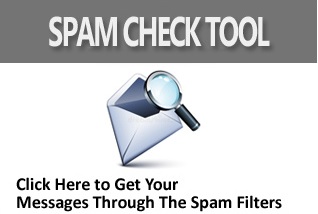
Many questions are asked when it comes to commercial email advertising, email scams and how to insure your broadcasts are in line with the latest spam laws. Most of the latest email laws and mandates are often a mystery to most marketers.
One of the most important variables we will review in this article is "permission based" email marketing. In a proper world, an entity must get approval before emailing any commercial solicitation. If the recipient of that email never requested it then the email will most likely be considered Spam. Many countries have implemented laws that prohibit the sending of spam or scam type emails. Is is important that email marketers act responsible and adhere to certain parameters when designing and implementing marketing campaigns.
For example, lets say you have a new ergonomic seat cover for paddle boats. You want to get the word out and stir up some excitement so people buy your product. You put together an advertisement flyer and try to capture the attention of your intended recipients. You type a broad subject line that is witty and then prepare your list of emails to send to. All that is left to do now is hit the send button. This should be as easy as slicing through warm apple pie right? Take a step back! People will not only identify your message as spam or an email marketing scam or hoax, you may be breaking the law. In the United States we are governed by the Can-Spam Act of 2003 that restricts the manner in which commercial emails can be distributed. The Can-Spam Act has 4 major parts.
Section 1) The first section deals with the forgery of email headers. Email headers if the part of the email message that identifies the source or origin of the message. Email headers should not be false or misleading. The sender needs to identify them self or the business that sent the commercial email to be compliance with this section of the law.
Section 2) The second section states that subject lines must not be deceptive. Deceptive or misleading subject lines are found in a staggering percentage of email scams. Using your example of the ergonomic car seat, you should avoid using a subject line that says "Its like being on a cloud in Heaven". Now the seat may give you a comfortable sitting at best, but will certainly not enable its user to sit along side with the Angels. Review and use a more direct subject line that will not mislead the recipient. Something like, "Minimize Back Discomfort with our Ergonomic Smart Seat" would be a far better choice.
Section 3) The third section states that valid who is information must be included and that the email message must identify itself as an advertisement. This means a physical postal information of the sender must be included along with a reference to the fact that the email is an advertisement. Many email marketers use the bottom portion of the message to display this information.
Section 4) The last section deals with Opt Out or unsubscribe links. This is probably the most abused section of the Can Spam Act (whether through malice or negligence). Basically one must give the recipient the ability to Opt Out or be removed from future follow up solicitations.
Failure to provide recipients with a means to remove themselves from your mailing lists carries pretty hefty fines. Each offence carries a maximum fine of $11,000. Even if you don’t run into legal or financial implications linked to your email campaigns, you still may face issues with your email messages being blocked or getting your web site shut down. There is also the possibility of tarnishingyour organizations reputation.
The Can Spam laws are specific to the USA and predominantly revolve around the "opt-out" method. It’s not exactly the same everywhere. Even though the American act has numerous detractors, specifically in relation to the method used to opt-out, which large numbers of people use as a free pass to send out spam anyhow. Most European countries, for example, have an opt-in method instead of the alternate opt-out one. These opt-in techniques are mostly used on a business’s Web page. When a prospect or customer purchases a product, he or she will have the opportunity to check a check box that lets the company know whether or not he/she would like to receive more details or information.
The bottom line is that you need both a Legal and functional solution to your commercial mailing needs. Bulk Email Superstore can assist you with setting up legally compliant permission based email lists and broadcasting solutions for your business. Please contact us for additional details.
Bulk Email Superstore reviews a variety of advertising topics for today’s internet marketers. Stay tuned to our site for more useful information.





